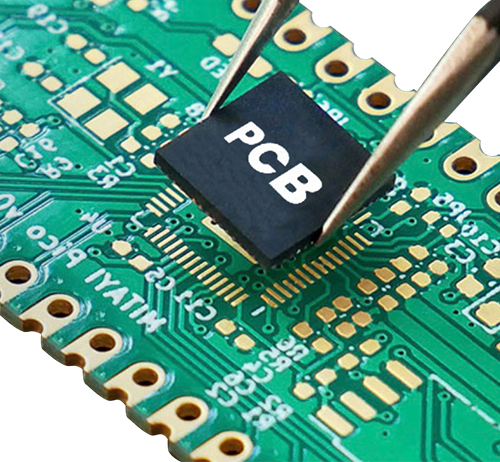Time:2022-11-17 Visit:
With the rapid progress of modern science and technology, PCB is also changing, but in principle, it is estimated that the production process of PCB remains unchanged. What are the specific production steps? The following sections will explain them one by one:

1. Printed circuit board.
That is to use transfer paper to print the printed circuit board. Note that the slippery side should face you. Usually, two circuit boards are printed on a piece of paper, and the best printed one is used to make the circuit board.
2. Cutting of copper clad plate
What is CCL? It is a circuit board with copper film on both sides. Cut the copper clad plate and make a full picture of the circuit board with a light-sensitive plate. Cut the copper clad laminate into the size of the circuit board, and be careful not to cut it too large to waste materials.
3. Pretreatment of copper clad plate
The oxide layer on the surface of the CCL needs to be polished with fine sandpaper to ensure that the toner on the thermal transfer paper can be firmly printed on the CCL when the PCB is transferred. (Polished bright without obvious stains).
4. Switch circuit board
Cut the printed circuit board into proper size, paste the side with the printed circuit board on the copper clad plate, and put the copper clad plate into the thermal transfer machine after alignment. When placing the transfer paper, make sure it is not in the wrong position. Generally, the circuit board can be firmly transferred to the copper clad plate after 2-3 times of transfer.
Tips: The heat transfer machine needs to be preheated in advance, and the temperature is set at 160-200 ℃. Because the temperature is very high, you should pay attention to safety during operation!
5. Corrosion circuit board and reflow welder
First, you need to check whether the transfer of the circuit board is completed. If it is found that some parts are not adjusted properly, you can use a black oily pen to repair them and then corrode them. When the copper film exposed on the circuit board is completely corroded, take the circuit board out of the etching solution for cleaning, so that the circuit board can be etched.
Composition of corrosion solution: concentrated hydrochloric acid: concentrated hydrogen peroxide: water=1:2:3. When preparing corrosive solution, drain the water first, and then add concentrated hydrochloric acid and concentrated hydrogen peroxide. If concentrated hydrochloric acid, concentrated hydrogen peroxide or corrosive solution is accidentally splashed on the skin or clothes during operation, it shall be washed with clean water in time. Due to the use of strong corrosive solution, please pay attention to safety during operation!
6. Circuit board drilling
It is necessary to drill holes on the circuit board because electronic components need to be inserted on the circuit board. The selection of drill pin is determined by the pin thickness of electronic components. When operating the drill to drill holes, the circuit board must be stable, the speed of the drill must be maintained, and the drill cannot be driven too slowly.
7. Circuit board pretreatment
After the last step (drilling) is completed, the circuit board needs to be pretreated, the carbon powder covered on the board is polished with fine sandpaper, and then the circuit board is cleaned with clean water. After the water on the circuit board is dry, apply rosin on the side with the circuit. The circuit board can be heated by a hot air blower to speed up the solidification of rosin. Rosin takes only 2-3 minutes to solidify.
8. Welding electronic components
This is the last step, welding all electronic components to the circuit board and energizing. So far, the production process of pcb board has been completed.